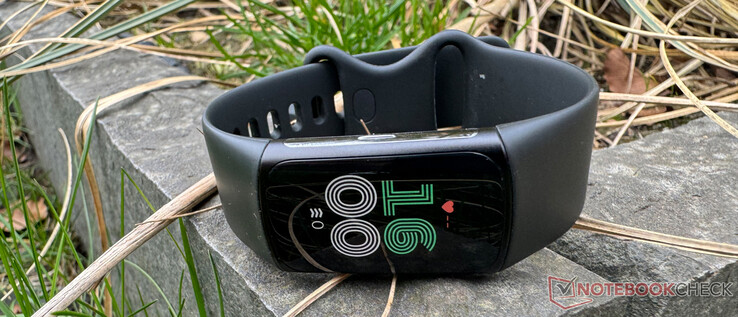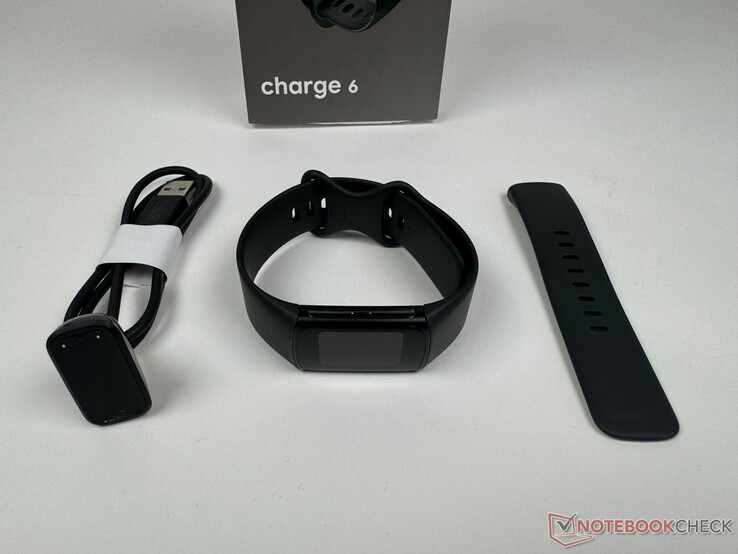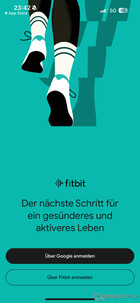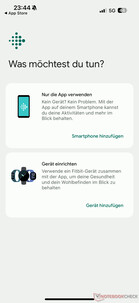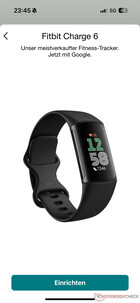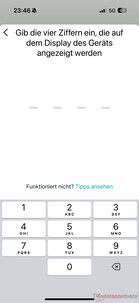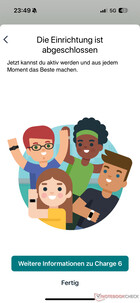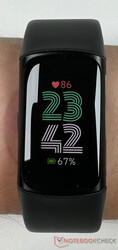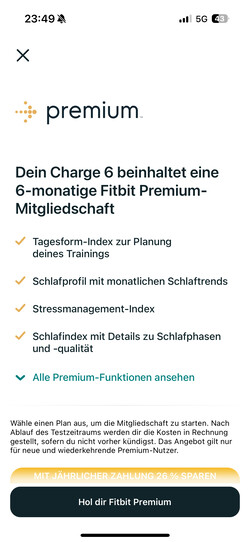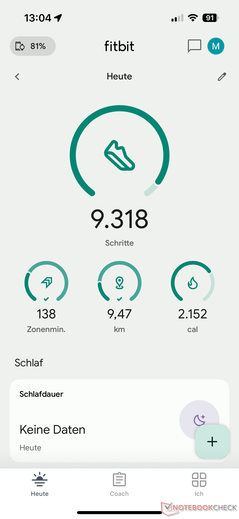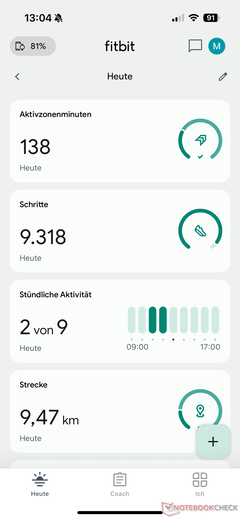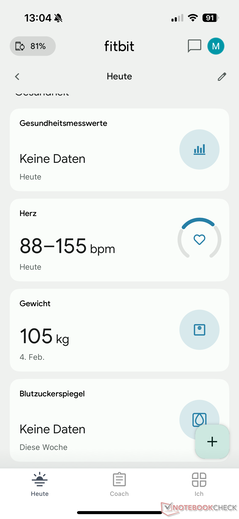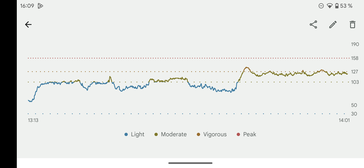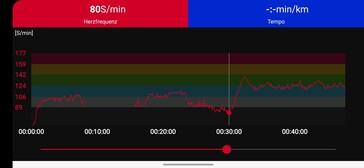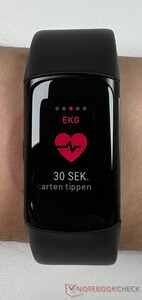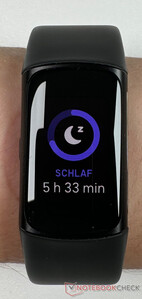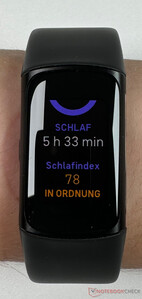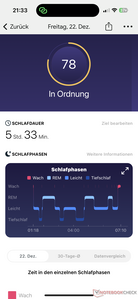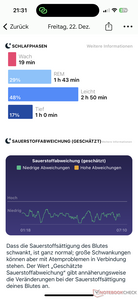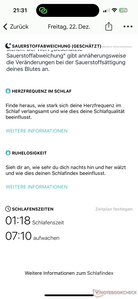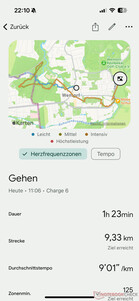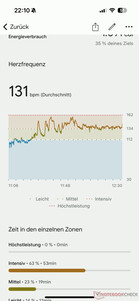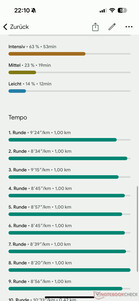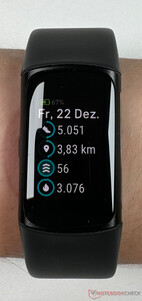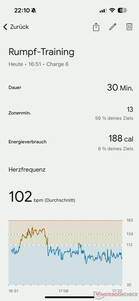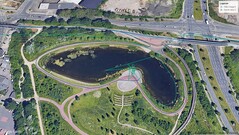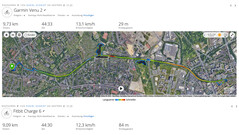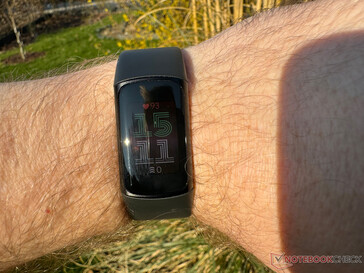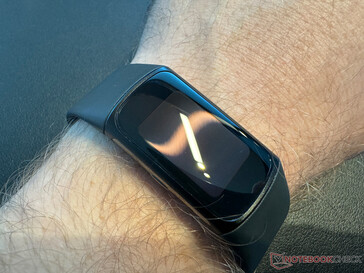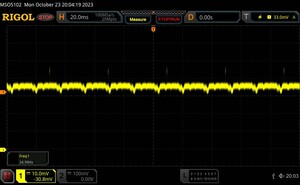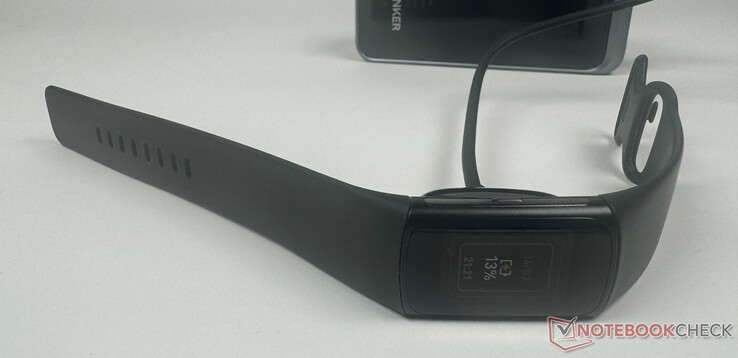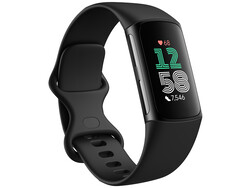Fitbit Charge 6 review: Fitness tracker with ECG reveals strengths and weaknesses
The Charge 6 is the latest fitness tracker in Fitbit's portfolio. The successor to the approximately three-year-old Fitbit Charge 5 (approx. 100 euros on Amazon) hardly differs visually from its predecessor and once again offers extensive features including an ECG app.
New additions include the revival of the physical button, native support for Google apps, and contactless payment via NFC and Google Wallet. The heart rate sensor is also said to be more accurate. Find out whether this is true, and what else the fitness wristband has to offer in our review.
Case and features: Fitness tracker with a familiar design
The Fitbit Charge 6 fitness tracker, which is water-resistant to 5 ATM, is available in three colors: obsidian/black, porcelain/silver, and coral/champagne gold. Additional wristbands are optionally available for purchase. We tested the black version.
The Fitbit Charge 6 case is made of aluminum, glass, and resin and has a classic and familiar design. Google supplies two wristbands in different lengths (S for 130 to 170 mm and L for 170 to 211 mm wrist circumference) made of silicone and an aluminum buckle.
Some skill is required when putting it on, as the rest of the strap is pushed between the strap and wrist through a second buckle behind the small pin for width adjustment. This at least prevents a protruding strap from getting caught.
Fitbit does not install the speaker and microphone in the housing, which is quite compact with dimensions of around 37 x 23 mm and a thickness of just over 11 mm.
Setup and operation: Google coercion and extensive app
The Fitbit app, which is available free of charge for Android and iOS, is required for setup. The procedure is standard. A new device must be added in the app and then the entry for the "Charge 6" model must be selected. Instructions on the screen then guide you through the few steps, which were completed quickly and easily in the test.
In addition to a detailed overview of all measurement data, the Fitbit app also offers various options for managing the tracker. Among other things, apps can be installed and uninstalled in the settings, Google Wallet for contactless payments (does not work with all banks - an overview can be found here) as well as Google Maps for navigation and YouTube Music for playback control (requires a paid Premium subscription) and, of course, the user can change the watch face. Colors and the displayed data can be adjusted, and new designs can be selected from around 40 templates. The initial setup of the ECG app is also carried out via the smartphone - more on this below.
The fitness tracker is operated via the button on the left edge of the casing, which can be used to unlock and lock the display and jump back to the start screen, as well as the usual touchscreen gestures. Swipes in all four directions lead through the wearable's menus, whereby the structure differs slightly from other manufacturers such as Huawei, Xiaomi, and others.
Swipes to the left and right take you through the various apps, including the 40+ sports modes, notifications, alarm clock, and timer, as well as the EDA scan and ECG app. A downward swipe takes you to the settings, while an upward swipe brings up the current measurements, such as steps, heart rate, SpO2, and sleep.
Telephony and notifications
The Fitbit Charge 6 displays notifications from the smartphone without any problems. The app can be used to select which type of messages (calls, text messages, calendar, and detailed selection of apps) should pop up on the wearable. There is no function for Bluetooth telephony, nor is there a separate mobile phone connection.
Voice assistant
The Charge 6 does not have a voice assistant on board, which would make little sense due to the lack of a microphone and speaker.
Health and fitness: Extensive equipment, but...
Health monitoring is the core competence of the Fitbit Charge 6, for which Google has installed a range of sensors. In addition to an optical heart rate monitor, there are red and infrared sensors on the back for monitoring blood oxygen saturation (SpO2), a skin temperature sensor, and electrical multi-purpose sensors for the ECG app for a heart rhythm check and the EDA Scan app for stress management. Data synchronization with Apple Health is also possible, Google Fit is a matter of course.
Fitbit hides some of the functions behind its premium subscription for 79.99 euros per year or 8.99 euros per month. When you buy the Charge 6, you get six months of Fitbit Premium for free. The following content is hidden behind the payment barrier:
- Daily form index for planning your training
- Sleep profile with monthly sleep trends
- Stress management index
- Sleep index with details on sleep phases and quality
- Guided workouts with conditioning
- Meditation and mindfulness exercises
- Recipes for healthy, nutritious meals
- Health report with monthly trends
Many of the functions are not essential for normal users but still provide interesting insights. If you want to continue using them after the test phase, you will still be asked to pay after purchasing the wearable.
Also annoying: when using the app on an iPhone 15 Pro, we noticed some missing translations that were not available on Android.
Activity goals
One of the primary tasks of a fitness wristband is to monitor daily activities. Individual goals such as steps, distance covered, calories burned and active zone minutes can be set as the primary daily goal via the app, and the wearable then informs you of your progress.
Fitbit also uses circles that are familiar and can be found in the devices of many manufacturers but not combined in one graphic. The app can also be used to set many other health goals, such as weight, sleep duration, and more. Badges are designed to provide additional motivation for an active lifestyle.
Heart rate, heart rhythm and blood oxygen saturation
In addition to 24/7 real-time heart rate measurement, the values of which can now also be displayed on compatible training devices via Bluetooth, the Fitbit Charge 6 also supports the ECG and blood oxygen saturation (SpO2) measurement.
The manufacturer promises an improvement in the accuracy of pulse monitoring with the new generation of the tracker. We can confirm this. The new fitness tracker delivers significantly more accurate measurement results. For both resting and performance heart rates, the deviations from a Polar H10 chest strap as a reference device were only around 1 percent. The course of the curves included above is also quite similar. So Fitbit delivers as promised here.
The Charge 6 also comes with an ECG app. This should be able to indicate an irregular heart rhythm. Unfortunately, the function refused to work on our test device. Even after a lot of trial and error under both Android and iOS, an error message always appeared stating that the function had to be set up and that a smartphone could not be found (despite an active connection). Unfortunately, it is therefore not possible to evaluate the ECG function.
Sleep tracking
Those who also wear the fitness tracker at night benefit from sleep tracking. The wristband monitors sleep in terms of duration and sleep phases (awake, REM, light, deep) and evaluates the quality of sleep. A few tips for improvement round off the function.
The wearable also has an integrated alarm clock, which can also wake you up intelligently in the optimum sleep phase within a defined time window if desired.
Training recording
Fitbit offers over 40 sports modes. This is significantly fewer than many other manufacturers, but covers the most common sports such as walking, running, cycling, golf, crossfit, and many more.
Different data is collected depending on the sport. Heart rate, training zone minutes, and calories burned are always included. In addition, sport-specific data such as steps, distance, average speed, and route history for outdoor activities with activated GPS are also recorded.
GPS and navigation
The Fitbit Charge 6 has an integrated GPS. It took quite a long time to establish a connection during the test, and the reception was not always as reliable as we would have liked.
Some of the recorded routes were quite adventurous, and there were also some deviations in the distance, average speed, and altitude meters covered compared to a Garmin Venu 2 as a reference device. We would like Fitbit to focus on improving the GPS accuracy for the next generation - as it has done with the heart rate sensor in the current model. On the other hand, the fact that the tracker can also be used for navigation via Google Maps is practical and a plus point. There is no longer a weather app for this.
Display: Smaller than expected
The display of the Fitbit Charge 6 measures 1.04 inches, just like its predecessor. Google has once again installed an AMOLED panel, the exact resolution of which is not stated. It provides a sufficiently detailed image and is still reasonably readable in direct sunlight but could be brighter overall.
The screen (the brighter area in the middle of the photo below) is still surrounded by fairly thick edges, which prevent a larger display area.
Another negative aspect is that we noticed screen flickering at a very low frequency of 25 Hz.
Screen Flickering / PWM (Pulse-Width Modulation)
| Screen flickering / PWM detected | 25 Hz | ||
The display backlight flickers at 25 Hz (worst case, e.g., utilizing PWM) . The frequency of 25 Hz is very low, so the flickering may cause eyestrain and headaches after extended use. In comparison: 53 % of all tested devices do not use PWM to dim the display. If PWM was detected, an average of 8083 (minimum: 5 - maximum: 343500) Hz was measured. | |||
Performance and runtime: Fitness tracker needs to be charged every few days
Google does not provide detailed information on the chipset and memory installed. Operation is smooth, so there is no reason for criticism here.
Battery life
According to the manufacturer, the Charge 6's unspecified battery lasts up to 7 days on a single charge. Other manufacturers promise significantly more. However, this naturally depends on the intensity of use and the settings. For example, GPS, always-on display mode and permanent SpO2 tracking consume more energy.
In our experience, a runtime of four to six days is realistic for normal to heavy use - other models can last significantly longer. This means that the tracker needs to be charged every few days using the USB charging cable supplied, which attaches magnetically to the back. The charging process takes around two hours.
Pros
Cons
Verdict: Fitbit Charge 6 also shows weaknesses in the test
Google's Fitbit brand does a lot of things right with its Charge 6. The fitness tracker offers a fairly wide range of functions including GPS and ECG app, although, in our practical test with our device, it should have tracked more accurately or failed to do so.
The heart rate sensor is more accurate than its predecessor. This is commendable on the one hand but also necessary on the other. The results in our test show only minor deviations.
Other new features include Google Maps navigation and music control from YouTube Music, although this only works with a paid YouTube Music Premium subscription. Here we would have liked Google to think a little more outside the box and also support other streaming services.
In addition to things like the thick display edges, there is also reason to criticize the hiding of some functions behind the Fitbit Premium payment barrier, even if we will probably have to get used to such procedures more and more. A Google account is also mandatory. The Fitbit Charge 6 is very much tailored to the Google world, which is also reflected in the sometimes sloppy navigation in the iOS app.
Overall, the Fitbit Charge 6 is a solid tracker for those who are already on the move in the Google cosmos. The ECG function, in particular (when it works), is a selling point that other fitness trackers rarely offer. However, these usually cost significantly less than the Fitbit Charge 6.
Price and availability
The recommended retail price for the Fitbit Charge 6 is around $160. However, the fitness tracker is currently available in stores for around 130 euros, e.g. Amazon, MediaMarkt, Galaxus, or Cyberport.
Transparency
The selection of devices to be reviewed is made by our editorial team. The test sample was provided to the author as a loan by the manufacturer or retailer for the purpose of this review. The lender had no influence on this review, nor did the manufacturer receive a copy of this review before publication. There was no obligation to publish this review. As an independent media company, Notebookcheck is not subjected to the authority of manufacturers, retailers or publishers.
This is how Notebookcheck is testing
Every year, Notebookcheck independently reviews hundreds of laptops and smartphones using standardized procedures to ensure that all results are comparable. We have continuously developed our test methods for around 20 years and set industry standards in the process. In our test labs, high-quality measuring equipment is utilized by experienced technicians and editors. These tests involve a multi-stage validation process. Our complex rating system is based on hundreds of well-founded measurements and benchmarks, which maintains objectivity. Further information on our test methods can be found here.


